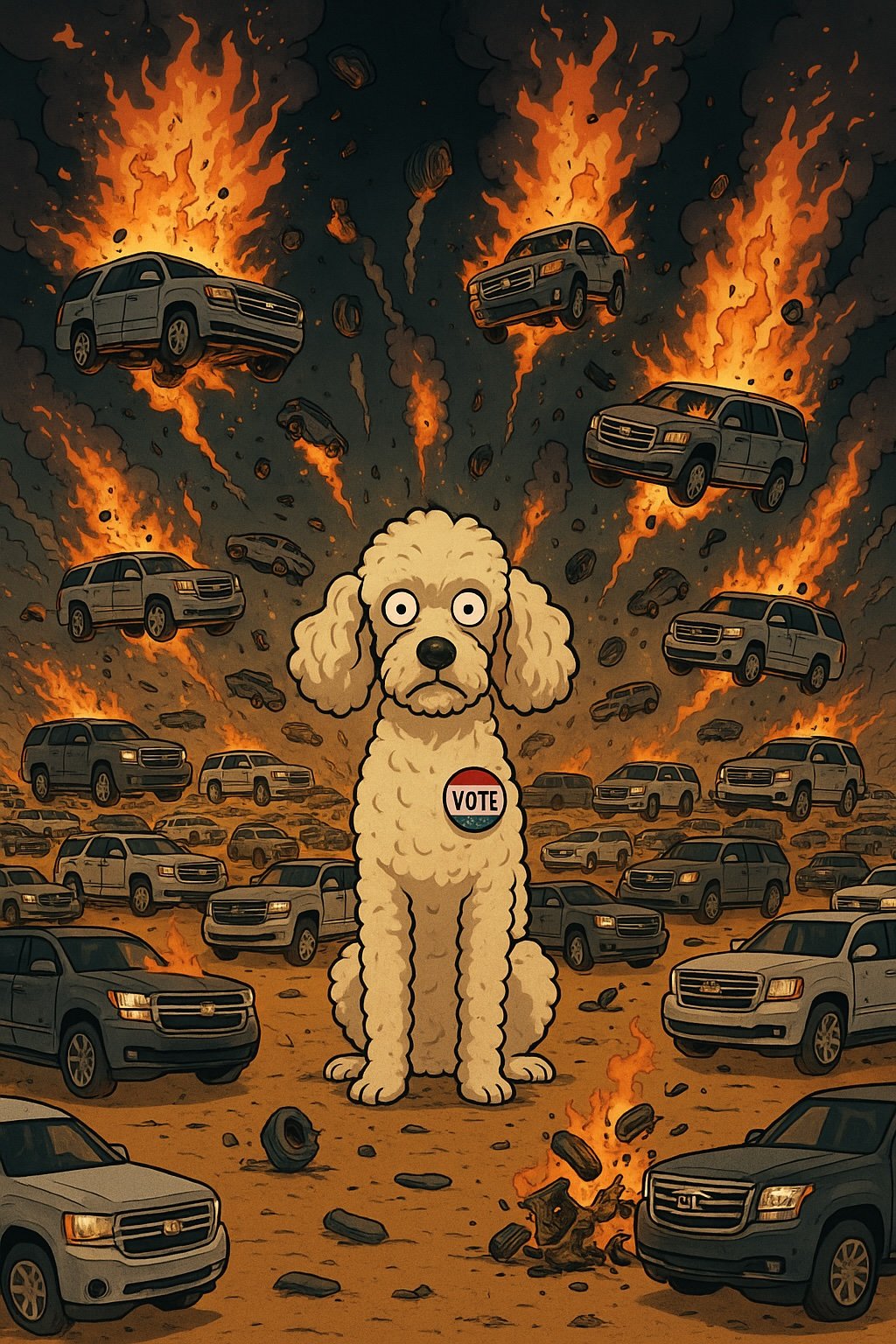GM Recalls 600,000 Trucks, Decides Engines Shouldn’t Randomly Explode
After issuing a recall for nearly 600,000 full-size trucks and SUVs because their engines tend to spontaneously self-destruct, General Motors is bravely stepping up to the plate with a bold, inspiring repair strategy:
“We’ll take a look and… well, we’ll see.”
That’s not satire — that’s actually what’s happening. According to GM’s recall documents, potentially defective engines will be “inspected” and then “either repaired or replaced.” That’s corporate speak for:
“We’ll shake the Magic 8 Ball and let you know if your $80,000 SUV qualifies for basic mechanical functionality.”
On April 24, GM issued its largest recall of the year, targeting a hearty 597,630 full-size trucks and SUVs from 2021 through 2024. The usual suspects: Chevy Silverado, Suburban, Tahoe, GMC Sierra, Yukon, and of course, the Cadillac Escalade, for when you want your luxury vehicle to come with a free game of “Will it Start Today?”
At the heart of this recall is the much-hyped 6.2-liter V8, an engine that can generate 420 horsepower — or, if it feels moody, zero, as it suddenly fails without warning. And we’re not talking about the occasional lemon. According to GM, there are 28,102 field complaints. Over 14,000 of those involve what’s known in polite recall language as a “loss of propulsion.” In regular English, that means:
“The engine blew up. Real good.”
And let’s not pretend this problem just popped up like a stray check engine light. GM has now completed four — yes, four — investigations in three years.
• One in early 2022
• Another in 2023
• A third wrapped up in July 2024
• And a final one launched in January 2025, after which someone finally said, “You know what? Maybe we should do something about this.”
And the best part? GM closed some of these investigations without action. Just let that sink in:
• Customers: “My engine failed and I nearly died.”
• GM: “Interesting. Let’s put that in a folder.”
• Customers: “It happened again.”
• GM: “Let’s open a new folder.”
One might think, after a century of building vehicles and enough engineering PhDs to populate a minor sci-fi convention, the concept of “make engine go, not explode” would be pretty well sorted out. This is crankshaft and connecting rod failure, aka the internal organs of your engine deciding to go full Jackson Pollock under the hood.
But fear not! GM says they’re working on “special diagnostic tools” to test for bearing damage. Yes — they’re still developing the tools now, in 2025, after shipping over half a million vehicles with potentially defective engines.
Because who wouldn’t want to beta test their engine scanner after the recall?
So, what changed between Investigation #3 and #4?
Good question. We asked GM directly. Their response?
“The safety and satisfaction of our customers are the highest priorities for the entire GM team…”
Translation:
“We’d rather not answer that, but here’s a generic word smoothie.”
What really happened? The NHTSA — that’s the National Highway Traffic Safety Administration for those not fluent in bureaucratic acronyms — got tired of watching GM investigate itself into a coma and opened its own investigation. And miraculously, that’s when GM suddenly remembered how to issue a recall.
And just in case your engine miraculously passes the Mystery Meat Inspection, GM has a backup solution:
They’ll swap out the oil.
That’s right — if the engine seems okay, they’ll ditch the factory-recommended 0W-20 oil and top you off with thicker 0W-40, hoping that maybe more viscous sludge will hold things together like emotional duct tape.
It’s the mechanical equivalent of saying:
“Your roof’s probably fine. We’ll just use thicker paint.”
Let’s recap this masterclass in corporate accountability:
• Multiple years of complaints ignored ✅
• Four investigations later, recall finally happens ✅
• Engines burst into flames ✅ Yes — actual fires. Flames. Burny things. The kind you hope to see in a fireplace, not under your Cadillac Escalade while picking up groceries.
• Repair strategy? “Look at it, maybe fix it, probably just add thicker oil” ✅✅✅
But hey, at least they’re doing all of this in the name of “customer satisfaction and safety.”
Nothing says “we’ve got your back” like rolling the dice on catastrophic engine failure and sending you off with an oil change.
It really makes you wonder:
If Ford can build an F-150 that can power your house, why can’t GM build a Silverado that can make it to Costco without bursting into flames?





